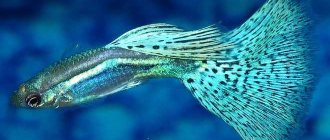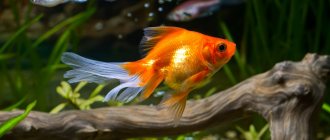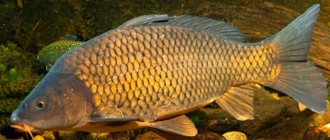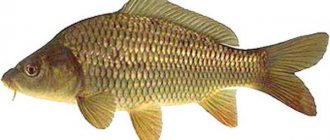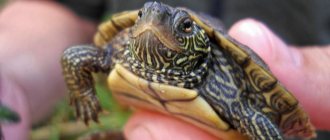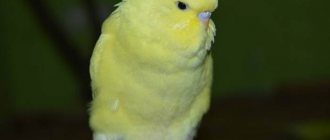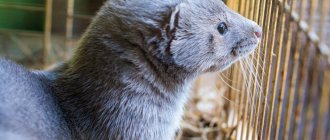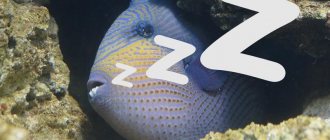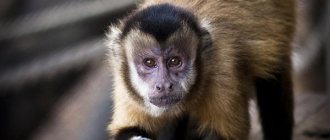In total, there are about 110 thousand species of snails in the world, of which about 2000 are found on the territory of the Russian Federation. The most terrible and dangerous snail is called Geographical cone . The danger lies in the ability to produce such an amount of toxins that can kill up to ten people. It works using a cloud that contains a huge amount of insulin and, when inhaled into the blood, instantly lowers the amount of sugar in a person’s blood. An antidote for these toxins has not yet been found.
Also very noteworthy is the snail Angustopila dominikae, which has a body size of only 0.8 millimeters. You can fit 4 of these clams into one eye of a needle. And the largest species of snail is the Australian gastropod. The weight of this representative reaches 18 kilograms. It was classified as a predator that settled 30 meters deep in Australia, Indonesia and New Guinea.
In total, there are three classes of these mollusks:
- marine;
- land;
- freshwater
In parallel, there are pulmonate and gill snails.
Achatina fulica (Achatina fulica)
Achatina fulica - Achatina fulica
Fulica lives in a tropical climate. The length of the mollusk is 20 cm. In a terrarium it grows up to 17 cm. The shape of the shell is conical with 6-9 turns. Body color is beige, light brown, less often black. The structure of the sole is coarse-mesh. Read more about housing and feeding here .
The color of the shell varies from dark brown to red. As the shell ages, it develops dark streaks and blurring. Apex brown, less often sandy, pointed. Columella is white or bluish in color.
Achatina Fulica umbilicata Neville
The snail does not require constant care and is inexpensive to maintain, which is why novice terrarium keepers choose it. The snail is omnivorous and gluttonous. Loves water, but does not tolerate waterlogging in the terrarium.
Active at temperatures from 20 to 28 degrees and humidity from 65% to 75%. In captivity, it lives up to 8 years. Achatina fulica becomes sexually mature at 5-6 months, with a clutch of 250 to 700 eggs. Egg size is 5-6 mm.
Achatina Fulica rodatzi Dunker
The fulika moves calmly and slowly. Watching her calms her down. In the first half of the day, she chooses a quiet place and takes a nap there. She is timid and makes a squeak when she hides in a shell. With poor care, it hibernates for up to 9 months.
In a community of relatives, compliant and friendly. The snails eat in turns, without interfering with each other. To keep 1 fulika, a terrarium volume of at least 15 liters is required.
Achatina Fulica sinistrosa Grateloup
Varieties of Achatina fulica:
- Achatina Fulica hamillei Petit
- Achatina Fulica rodatzi Dunker
- Achatina Fulica sinistrosa Grateloup
- Achatina Fulica umbilicata Neville
Achatina Fulica hamillei Petit
Snail nutrition
Snail food is determined by its habitat. As a rule, their diet is extremely varied. These mollusks are consumed as food:
- Remains of rotten plants;
- Non-solid plants;
- Worms;
- Carrion;
- Fish;
- Your relatives;
- Insects;
- Crustaceans.
Land mollusks adhere to a vegetarian diet. Their diet mainly consists of various leaves, fruits and berries, vegetables and herbs. Young snails eat fresh leaves, but as they age, they prefer already rotten plants.
Achatina reticulata
Achatina reticulata -
Also a popular species among snail breeders. She is originally from Zanzibar. The length of the corrugated shell is 18 cm. The color of the shell ranges from light beige to brown with dots and axial stripes. The apex is beige or sandy, the collumella is white. The body and head of the reticulum are beige or brown, and the edges of the sole are light. Read more about care and reproduction in our article .
See more similar articles:
Large African snail - Achatina Fulica (Achatina...
Achatina - African giant snail
Back Forward 1 of 6
The snail is active, sociable and curious. Always cranes his head to keep abreast of events. She is smart, learns quickly, and you can easily teach her to eat by the hour. Gluttonous, eats everything.
Achatina reticulata dark head
Active even in the first half of the day, becomes attached to the owner and distinguishes him from strangers. Favorable temperature for life is from 25 to 27 degrees and humidity from 60% to 75%. In captivity, it lives up to 6 years. At 10-12 months the snail becomes sexually mature; the clutch contains 300 eggs, 7-8 mm each.
Albino snails are valued among snail breeders. This variety of reticulata albino is smaller in size and grows slower than its counterparts. Their length is 15 cm. The color of the body and head is white. The color of the shell, apex and columella is milky white. Mobile, active mollusks easily come into contact with humans.
Achatina reticulata albino
To keep Achatina reticulata you need a terrarium with a volume of 20 liters.
Varieties of Achatina reticulata:
- Achatina reticulata light head
- Achatina reticulata dark head
- Achatina reticulata albino
Achatina reticulata light head
Snail breeding
The method of reproduction of snails is determined depending on their affiliation. For example, many gastropod snails are primarily oviparous animals. And the fertilization process itself is determined by the habitat.
Snails that are endowed with lungs and live in water or land are considered hermaphrodites. They have two principles: male and female. Freshwater species lay eggs in capsules, while land species lay eggs in small holes. One clutch can produce 85 eggs. Their ripening process does not exceed 28 days.
Achatina immaculata
Achatina immaculata - Achatina immaculata
Immaculata is similar to fulica. Her homeland is Tanzania. She is popular as a pet. Unpretentious, omnivorous and beautiful. See more useful information about immaculata here .
The length of the plump conical shell is 12 cm with 5-6 rounded turns, like a “striped watermelon”. The color of the shell varies from light brown to dark brown with even stripes. Apex beige or sand. Achatina immaculata is distinguished by its pink-violet columella. To see this, pull back the snail's mantle slightly.
Achatina immaculata panthera
The body of the immaculata is light beige, thicker and larger than that of the fulik, with a characteristic stripe on the neck.
The snail grows well and reaches sexual maturity at 9 months, laying 150 eggs of 6 mm each. Unusually, it reproduces by self-fertilization. 25 - 27 degrees is a comfortable temperature for living. Humidity 75%-80%.
Achatina immaculata var. panthera
Among snail breeders, immaculata panthera . The content is an unpretentious snail. Sociable and friendly. It can sometimes hibernate in winter. It grows slowly and reaches 10-15 cm in length.
The body color is light pink with a peach stripe across the entire head. The sole is soft with a mesh pattern. The shell is light in brown stripes without blur and dots, conical in shape. The apex is light, the columella is crimson. With a lack of calcium, immaculate, the panther can gnaw on the shells of its neighbors. The volume of the terrarium for 1 Achatina immaculate is 15 liters.
Achatina immaculata Smitty - Achatina immaculata var. smithii
Varieties of Achatina immaculata:
- Achatina immaculata var. smithii
- Achatina immaculata var. panthera
- Achatina immaculata var. immaculata "two-tone"
Achatina immaculata immaculata “two-tone”
Land
These are some of the popular types of pets. There are several types of mollusks representing this subgroup. Most land snails belong to the Achatina species. The second most common representative is the grape snail.
Achatina
The size of these gastropods sometimes reaches 25 centimeters. Body color varies from light brown to green. When maintaining, a container with a volume of 25–30 liters is required with the obligatory presence of soil. It must be kept moist at all times. They feed on plants, fruits and vegetables. Banana slices serve as a delicacy. The diet must contain protein foods. Daphnia and gammarus are used as feed.
There are a huge number of varieties of Achatina. Of the most interesting and unusual individuals, the following can be distinguished.
- Achatina fulica is a lazy mollusk. In his free time from eating, he prefers to relax in the house. Its size reaches 20 centimeters. Females are fertile and lay large numbers of eggs. The shell has a conical shape. The colors come in a variety of colors. In the wild, there are individuals of brown, cream and dark color. She leads a terrestrial lifestyle. This type of land snail is capable of laying up to 400 eggs during the breeding season.
- Achatina iradeli is an unusual species of snail, as it has the ability to give birth to viviparity. During the mating process, parents change sex. About 20 snails are born at a time. The color of the shell of the mollusk is yellowish. It uses berries and fruits as food, as well as rotten cabbage leaves. It has pulmonary breathing, which allows the snail to live on land.
Grape
This is a large land mollusk that lives in forests, meadows and parks. The width of the grape snail's shell reaches 45 millimeters. Its color is usually yellowish. Life expectancy ranges from 5 to 7 years. It feeds on plants and vegetables. The diet contains burdock, cabbage, and dandelion leaves. It loves moisture and hides under stones and other shelters during dry periods. Before the onset of cold weather, he leads an active lifestyle. When the temperature drops, it enters a state of suspended animation.
Achatina albopicta
Achatina albopicta - Achatina albopicta
Albopicta is similar to Achatina reticulata. Tanzania and Kenya are its homeland. The ribbed shell reaches 16 cm, the color is marbled with brown veins. A characteristic difference is that the columella is white or yellow. Apex pink or white. More useful information about albopicte here . The mollusk grows quickly, reaching 12 cm in six months.
Achatina albopicta - Achatina albopicta
It is not a demanding, omnivorous and friendly pet. The temperature in the terrarium is 26-29 degrees, and the humidity is 80%-90%. Leads a nocturnal lifestyle. During the day he buries himself in the litter and sleeps.
Reaches sexual age at 9 months, in a clutch of 250 eggs of 5 mm each. The volume of the terrarium for 1 Achatina albopicta is 20 liters.
Achatina albopicta - Achatina albopicta
Content Features
Achatina is the least of all pets in need of care and special conditions. All actions will boil down to arranging the terrarium and setting it to optimal humidity, lighting and heating. You need to bring the living conditions as close as possible to natural ones so that the snail feels comfortable.
Preparing the terrarium
The terrarium needs to be arranged like a tropical home
It is not necessary to buy a special terrarium for Achatina, since it can be made from an ordinary aquarium. It is important to consider volume. There should be at least 10 liters per snail.
Important! The larger the terrarium, the larger the mollusk will grow.
Make sure that the top of the home is protected with a lid, as the snail can crawl out. For better ventilation, holes must be provided in the coating. As a last resort, you can simply lift the lid to create a small gap.
At the bottom of the aquarium you need to place pieces of wood (hard to rot), moss, and fragments of clay pots. This will serve as a shelter for the snail during the daytime. Many Achatina owners plant living plants inside the terrarium. The most unpretentious species are fern and ivy. They not only look beautiful, but also purify the air and create a natural microclimate. However, in this case, the substrate should not be allowed to become waterlogged.
When arranging a terrarium, you need to provide a small container with water, because Achatina loves to swim. As it becomes dirty, it will need to be changed. As a rule, this happens every 5-7 days.
Important! The container should be shallow so that the snail does not choke in it by an absurd accident.
Also keep in mind that such a bath should be heavy so that Achatina does not turn it over. Spilled water will lead to increased humidity inside the aquarium.
The location for the terrarium can be anywhere. Make sure that there are no heating devices nearby, as this will create an unacceptable temperature contrast. For the same reason, keep Achatina’s housing away from windows so that direct sunlight does not fall on it.
What to fill, how and how often to clean
The equipment will allow the snail to feel safe
Achatina like to burrow into the substrate, especially during the day. Therefore, you need to place appropriate bedding at the bottom of the terrarium. Some people use flower compost (necessarily without fertilizers) or peat (neutral) for these purposes. However, this approach is not very aesthetically pleasing, since after a while pets stained with dirt will crawl on the glass, leaving no less creepy traces behind them.
An alternative solution is loose sand, which will need to be constantly moistened. It can also be replaced with hazelnut or walnut shells.
Important! It is not recommended to use fatty loams or clay as a substrate.
The terrarium must be cleaned regularly, at least once every 2 months. This means completely replacing the substrate, washing glass, etc. Otherwise, there will be a rotten smell inside the aquarium, and the walls will be covered with an impressive layer of mucus from Achatina. Feces should be removed more often as they become dirty. Clean owners carry it out every day.
Optimal temperature and illumination
It is important to maintain a day and night routine
Since Achatina are African mollusks, they need to be provided with conditions that are as similar as possible to their natural habitat. Therefore, the following aspects should be highlighted:
- It is not necessary to equip the terrarium itself with lamps, since the intensity of the rays does not play a special role for snails. It is important to observe the change of “day” and “night”. Achatina lead an active lifestyle in a darkened terrarium, and in the light they hide in the substrate. However, if plants that need light are planted inside the home, then you will have to install lighting above the aquarium.
- Giant snails are tropical inhabitants. The optimal temperature inside the terrarium should vary between +20°C..+28°C. Therefore, the adjustment will depend on how warm it is in your apartment.
- An equally important criterion for the life of Achatina is humidity. Its deficiency or excess can be determined by the behavior of the snail. If it hangs on the walls all the time, this indicates increased humidity. Otherwise, the mollusk constantly hides inside the shell. To increase humidity, just spray the substrate with a spray bottle. And to drain the home, you need to open the lid of the aquarium and shine light into it.
Lemon Achatina (Achatina iredalei)
Lemon Achatina - Achatina iredalei
Iradelie comes from Zanzibar. The conical shell measures 6 cm with 4 turns. This species received its name for the lemon-yellow color of the shell and the cream color of the sole. The color of the head is darker than that of the sole. The apex is sandy or yellow, the columella is yellow.
This snail is viviparous (does not lay eggs). It becomes sexually mature at 7 months, and 25 snails, each 1 cm in size, are born every six months.
Akhatina Iradelie
She is active, sociable and curious, unpretentious to the conditions of detention. Loves water and tasty food. 23-28 degrees is the optimal temperature for lemon snail. Humidity 70%-90%.
It is nocturnal, squeaks, rustles and eats. Distinguishes the owner from strangers. She loves to be held. The volume of the terrarium for lemon Achatina is 10 liters.
Varieties of Achatina iradelei:
- Achatina iredalei albino
Achatina iredalei albino
General characteristics of snails
The snail is a unique creature that is well adapted to life in nature, and is also quite often found as a pet. By origin, snails are mollusks and belong to the category of gastropods.
Characteristic
The snail is distinguished by its structure. As a rule, their body consists of several parts: head, leg, visceral sac and mantle fold. The movement of snails is carried out using the sole, which is located on the back of the leg. Direct movement occurs through wave-like muscle contractions. To glide quickly and easily, snails produce a large amount of mucus.
The structure of a snail shell is presented in the form of several layers:
- The periostracum is a rather thin outer layer of the shell;
- Ostracum - located in the middle of the shell and contains calcium carbonate;
- The hypostracum is the innermost layer, also consisting of calcium carbonate.
Snail mucus has a unique composition that is of great importance for the life of the mollusk. Mucus contains only mucin protein and water. This mucus is widely used in several areas of human life. For example, today it is used in cosmetic procedures. It helps rejuvenate and moisturize skin cells.
Brown Achatina (Achatina glutinosa)
Brown Achatina - Achatina glutinosa)
The snail is similar to the immaculate panther and fulica. Mozambique and Malawi are her homeland. The size of the mollusk reaches 12 cm. The shell is massive, ovoid-conical in shape, dark brown in color with brown stripes. Apex brown, slightly rounded. Columella is white or blue.
The body is massive, gray-brown with a darkened stripe on the head. With good care it grows quickly. He loves water and swimming, combining communication with the owner and water procedures.
Achatina glutinosa
Brown Achatina is sociable, omnivorous and active - even in the daytime. The optimal temperature is 25 - 28 degrees. Humidity 65% - 70%.
Rarely found in home terrariums. It becomes sexually mature at 7 months, with a clutch of 300 eggs. The volume of the terrarium for brown Achatina is 15 liters.
Achatina glutinosa
Water
Gill snails prefer to live in salt water. There are individuals that live in fresh water bodies. Snails with different shell colors have been bred under artificial conditions.
Helena
Inhabits the flowing waters of Southeast Asia. Loves rivers with muddy banks. Adapted well to life in aquarium conditions. The diameter of the shell does not exceed 20 millimeters. This snail can live for about two years. A distinctive feature is that it uses its fellow creatures as food. It also feeds on settled particles of fish food. Aquarists keep it to reduce the snail population in their tank. Helena prefers slightly salted water with medium hardness.
Ampoules
They are small representatives of the gastropod order. Ampullaria live in fresh water bodies of Europe. It has a special cavity divided into two parts. With its help, the snail breathes both underwater and on land. At home, individuals with a yellow shell color are popular. Its diameter sometimes reaches 7 centimeters. By nature it is omnivorous. In aquariums it feeds on algae particles and food debris that has settled to the bottom. The optimal water temperature is 20–25 degrees. Acidity and hardness must be maintained at a neutral level. Lack of microelements leads to the destruction of the shell. They lead an active lifestyle. They tend to reproduce frequently. Life expectancy in captivity is 1–2 years.
Bitinii
They live in shallow waters in lakes and rivers of Asia with peaty soil. This type of domestic snail receives oxygen using the gill apparatus. It has an olive or gray body color. The specimen's shell is strong. It can be smooth or ribbed. These gastropods are not distinguished by their large shell sizes. Its width reaches 9 mm. Aquatic plankton and plant detritus are used as food.
Luzhanki
They live in fresh water bodies of central Europe. There are 5–6 relief turns on the cone-shaped shell. This type of aquarium snail does not lay eggs like most gastropods, but gives birth to live snails. Tolerates temperature changes well. In the wild, it survives even when frozen in ice. They are good aquarium filters. They feed on leftover food from the bottom of the tank. You should be careful, as the meadows become food for cichlids and other predatory fish.
Trumpeters
They have impressive body size. The length of the shell reaches 23 centimeters. The shell is colored light brown. Its habitat is the waters of the North Atlantic. Individuals breathe using one gill cavity. They are predators by nature. His saliva contains a special substance that paralyzes the victim. The diet is dominated by mollusks, plankton, and dead bodies of fish and animals. The female is capable of laying up to one thousand eggs, which are attached to the ground or stones.
Achatina "tiger" or common Achatina (Achatina achatina)
Common Achatina - Achatina achatina
The largest species of African snail. At home in Nigeria, its size reaches 33 cm. However, in captivity it grows up to 25 cm. The weight of the mollusk is 400 grams. The color of the barrel shell varies from lemon yellow to tan, with black-brown stripes and dots. The apex is yellow, the columella is crimson or pink. There is a separate article on the site dedicated to the tiger snail - read .
Achatina "tiger" - Achatina achatina
The body color is black or brown, but there are also albinos with white legs. They are calm and lazy by nature and prefer to sit in one place. They sleep a lot in the bedding, distracted only by food. Slow and unsociable.
Achatina achatina
They are demanding on nutrition and living conditions and grow slowly. They reach sexual maturity at 2 years, in a clutch of 100 eggs of 7 mm each.
Achatina Аchatina Albino
Content temperature 26-30 degrees. Humidity 70%-90%. It is rare to find snail breeders in terrariums. The volume of a terrarium for an Achatina tiger is 30 liters. Albinos require special care, see here .
Achatina achatina roseolabiata depravata
Exotic dishes are prepared from the meat of Achatina vulgaris. Its meat is believed to cure tuberculosis.
Varieties of Achatina Achatina:
- Achatina Аchatina Albino
- Achatina achatina roseolabiata depravata
- Achatina achatina elegans monochromatica togënsis bayoli
Achatina achatina monochromatica togënsis bayoli
Aquarium inhabitants
Small snails help clean the aquarium. Ampularia are unpretentious, grow up to 15 cm and are distinguished by a white body and a yellowish shell. They definitely need to leave air space. The aquarium is covered with a lid, as small snails quickly crawl out of the container.
Another common type is the coil. Individuals are small, reaching a length of 3 cm and are very fertile. Very tenacious, able to survive even dirty water. A distinctive feature is the spirally twisted shell of a dark color. Sometimes they end up in an aquarium with plants (the eggs are attached to the leaves). They feed on leftover food and algae.
A rare representative of aquatic inhabitants is the fisa. This is a small snail with a pointed shell. Able to crawl into any corner of the aquarium. The shell is yellow-brown or brown. Cleans the container from food residues and bacterial films. Effectively destroys green plaque. It has a high reproduction rate , so you need to regularly inspect the aquarium for the appearance of eggs.
Achatina zanzibarica
Achatina zanzibarica
As the name suggests, the snail comes from Zanzibar. In captivity it grows up to 12. The cone-shaped shell is straw-yellow in color with brown stripes and dots. But there are Zanzibaris with a pure yellow shell. Apex pink, pointed. Columella is white and blue. The snail's body is beige or light brown with a mesh pattern.
Achatina Zanzibarica is viviparous (does not lay eggs). It becomes sexually mature at 8 months, and 30 snails measuring 7 mm in size are born once a year. The optimal temperature is 25 - 28 degrees. They love warm soil. Humidity 70%-80%.
Achatina zanzibarica
They are rarely found in home terrariums, as they are capricious in maintenance. They gnaw each other's shells and often go into hibernation.
Achatina zanzibarica albino
With proper care, the Zanzibarka grows quickly and eats well. Active and curious, they love to swim. During the daytime, they sleep buried in the ground. In captivity they live up to 6 years. The volume of the terrarium for the Achatina Zanzibarik is 15 liters.
Achatina zanzibarica
If you decide to keep different species of Achatina in one terrarium, pay attention to the compatibility table for different types of African snails.
Other types
Melania
He is a tank cleaner type, like all representatives of this breed. They eat the remains of rotten food at the bottom of the aquarium. The size does not exceed three centimeters. It has a gray-green shell color with dark stripes. They cannot tolerate low water temperatures in tanks, since in the wild their habitat is the tropics. They multiply quickly, which causes inconvenience, as they are difficult to breed. They spend most of their lives buried in the ground. The hard shell serves as a defense mechanism against predatory fish. They feed on settled fish food. If desired, you can include pieces of vegetables in your food.
Fiza
Has a small body size. It is useful for the aquarium because it cleans the walls of the tank from white deposits. The unusual shape of the shell allows it to penetrate into corners of the aquarium that are inaccessible to other inhabitants, and the presence of pulmonary respiration allows it to live in different habitats. The water temperature when kept is 22–24 degrees. Feeds on aquarium algae. The state of the gastropod's shell determines the level of acidity in the tank. Its elevated level leads to the destruction of the mollusk's protective word.
Additional recommendations
A healthy Achatina interacts with people with interest, has a clean, moist body and a strong, brightly colored shell. To ensure that it always remains like this, snail owners need to consider the following:
- The terrarium should be placed away from sunlight and drafts.
- You should not leave your pet outside the house unattended, as you may not be able to find it later.
- Shellfish love cucumbers very much, but they do not have much nutritional value.
- It is not recommended to feed snails peaches, as this causes their mucus to become too liquid.
- It is very important that Achatina does not come into contact with pesticides, household chemicals, and does not eat salt and sugar.
By following simple rules of care, you can raise a beautiful and cheerful pet. He will always feel the kind attitude of the owner and will definitely repay him in kind.
Story
Achatina were brought to Europe from southern exotic countries. They live in large numbers in Africa, South America, Mauritius and other southern islands. Due to their enormous fertility, they are able to quickly populate entire colonies over vast territories, eating vegetation and damaging agricultural land. Therefore, in some tropical countries it is prohibited to breed and sell them. But in the temperate climate zone they do not survive and are able to reproduce only in artificial conditions.
They are considered the largest among all types of snails. The size of an adult individual can reach 20 cm. This snail attracts with its gentle disposition, lack of noise, odor and allergies, as well as a variety of shell colors.
Varieties
If you decide to have such an exotic pet at home, you should learn to identify the breeds of snails and their subspecies. The living conditions of these snails are similar, but there are some differences in behavior and appearance. As already written above, there are a lot of different types of Achatina in nature - about 60 names , some of them have subspecies. Let's list the most famous of them.
Achatina achatina
They are easily recognizable by the tiger color of their shell: dark brown spots on a yellow background. Among them there are individuals with a standard color, and there are also albino Achatina, whose body is white, devoid of any pigment, and the shell is light yellow. It is believed that in this way the snail adapts to high temperatures in its homeland and protects itself from overheating. It is believed that albinos were first brought to Russia in 2009 by a breeder from Austria. Since then the population has been expanding.
At home, albino Achatina need to create conditions close to the tropics - increased temperature and humidity.
Achatina fulica
The most numerous and most unpretentious species of Achatina. It can go without food or drink for up to several weeks, and reproduce without any special conditions. It is customary to distinguish 5 main subspecies of Achatina fulica.
- Fulica standard . The shell itself is brown with various shades and mottled patterns, and the apex and columella (the inner part of the shell near the mouth) are white. Body color can range from light beige to dark brown.
- Fulica hemeli (hamillei). It can be distinguished from the standard one by its pink apex (the upper curl on the shell).
- Fulika albino body. The color of the shell can be anything, but the body is exclusively milky white. Some sources also mention its name “white jade”.
- Fulika rodatzi Dunker. The body and shell have a plain yellow color without a pattern.
- Fulica leucistic (Achatina fulica leucistic). They also have a white body, but the pupils are black.
Achatina glutinosa
Achatina glutinosa, translated from Latin as sticky - its shell has a glossy, sugar-like surface and seems sticky. It is somewhat smaller in size than the fulika - its length is about 10 cm.
Achatina reticulata
Reticulata (translated from Latin as reticulate) has a shell with a rough surface and a fine mesh pattern. The snail's head usually has a slightly brighter color compared to the rest of the body.
Achatina albopicta
At first glance, albopicta is very similar to reticulata. They can be distinguished by the presence of a pink apex. In addition, albopicta does not have such pronounced ribbing as the previous species. The final whorl on the shell is usually darker than the rest, and the first whorls have a mottled, uneven color.
Achatina iredalei
Iradelli is also called lemon because of its yellow shell. The size of the snails is small - only 5-8 cm. They differ from their relatives in that they do not lay eggs, but give birth to live cubs.
Achatina craveni
Cravens are also characterized by their small size (5-7 cm including shell) and are also viviparous. Kraveni do not tolerate heat well, so there is a high mortality rate among them at home. The optimal temperature is about +15... 20 degrees Celsius. They love high humidity.
Delicious recipe! What are the benefits of dried apples for the body?
Archachatina marginata ovum
Marginata ovum belongs to the archahatina family. Unlike Achatina, these are larger and more massive individuals. Their shell is wider and more rounded, colored yellow-brown, and the leg has a V-shaped silhouette. The body is dark, gray-brown.
Achatina immaculata
The immaculata grows quickly. An adult snail reaches up to 15 cm in length. The color of the shell can be different, but most often it is a variation on the theme of red and brown. The intensity of the pigment may vary slightly among individuals depending on the conditions of detention and habitat. A wide stripe runs along the entire body, starting from the head of the snail. Several times they tried to bring two-ton immaculata to Russia for propagation.
The peculiarity of this subspecies is that the final turn on the shell is two-color. However, this subspecies of snails turned out to be very capricious and unadapted to living conditions in captivity.
To date, there is no information about two-color immaculates available in our country.
Achatina panthera
Achatina panther is a very beautiful snail. Her shell is decorated with multi-colored stripes. Due to its rainbow coloration, the panther is very popular among breeders. Its size is about 14 cm. Depending on the color of the shell, it is customary to distinguish several subgroups of the Achatina panther.
- Férussac. This group is considered the standard. Her homeland is Mauritius. Their shell is walnut-colored with iridescent stripes ranging from white and pink to deep purple. Covered with a thin protective film, which gradually peels off closer to the age of one year.
- Lamarckiana Pfeiffer. This subspecies lives in Malawi, Madagascar and Mauritius. The Lamarckian has a more elongated shell than other panthers, with a pattern in the form of chaotically scattered spots and strokes. The final turn of the shell is monochromatic.
- Antourtourensis Crosse. This is a rather rare subspecies. According to some information, it was formed in Madagascar, so sometimes this group of Achatina is called “Madagascar”. This group is albinos - the shell is devoid of any color, and the body length of the snail is only 8-9 cm.
Zanzibarica Bourguignat
Zanzibar snails, native to the African countries of Zanzibar and Tanzania (hence their name), are a viviparous species. In captivity, they rarely grow more than 10 cm. The body of the Zanzibariki is light gray, the head has a dark stripe. Individuals born in natural conditions have a darker body than those born in captivity. The shell is straw yellow, with a variegated brown mesh pattern. The pattern may vary between natural and artificially grown mollusks. In domesticated individuals it is more abstract, while in domesticated offspring there are broad lines of brown pigment.
Sometimes the picture may be missing.
Weynsi Dautzenberg
The countries of Congo and Burundi are considered the homeland of this species. The size of the shell is slightly less than 10 cm, the color is light beige with a brown zigzag pattern. The color of the apex is pink with varying degrees of intensity, the columella is pure white.
Tincta
This species is also native to the Congo. The length of the shell is about 12 cm, the color is brindle, the intensity depends on the place of origin, the body is pinkish-brown, the apex is white from birth, and becomes pink by the age of one year.
Achatina vestita
A very rare species, practically never found in private collections. Homeland - South Africa. In nature, it leads an arboreal lifestyle. The size of the shell is about 7 cm, the surface is rough and flaky, as if with a “gun” effect. The body is beige, with a brown stripe, the head is slightly darker than the body. The main background of the shell is brown, with a light blurred pattern.
Achatina varicosa
Achatina varicosa is about 7-10 cm in size, native to Africa. Some sources also mention the name zebra. The shell is light, with brown or black waves. The apex and columella are white and pink. At temperatures below +15 degrees Celsius it goes into hibernation.
Achatina schweinfurthii
Another rare and little-studied species of snail, which became known to the general public in 2013. These snails were brought to the European continent from Sudan and Congo. The shells of these Achatina grow up to 14-15 cm. The shell has a glossy surface, pistachio color, with dark brown stripes.
To learn how to care for Achatina reticulata snails, watch the following video.
The most popular types of domestic Achatina with the names of African snails, description of the species with photos and videos. Table of shrinkage rates of different types of snails in a terrarium.
There are about 60 species of Achatina in Africa. They vary in body color and shape, shell size and shade, and character. Achatina are unique and different from each other, like fingerprints.
After getting acquainted with the most popular types of domestic Achatina, you can choose your favorite pet and friend.
